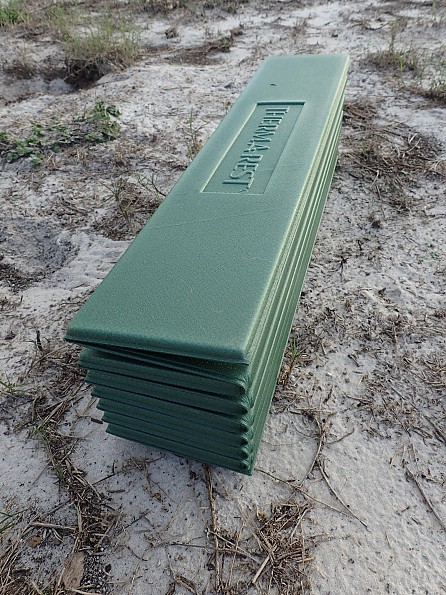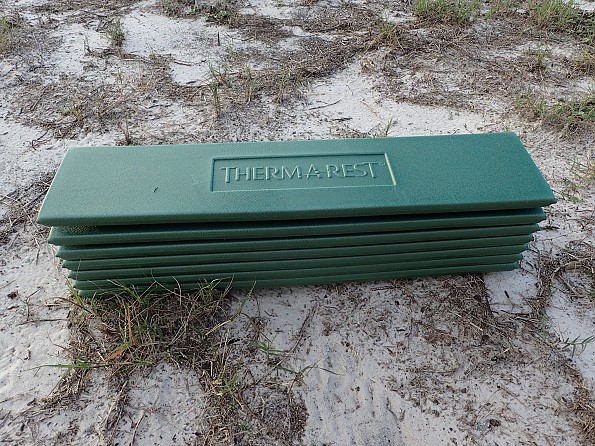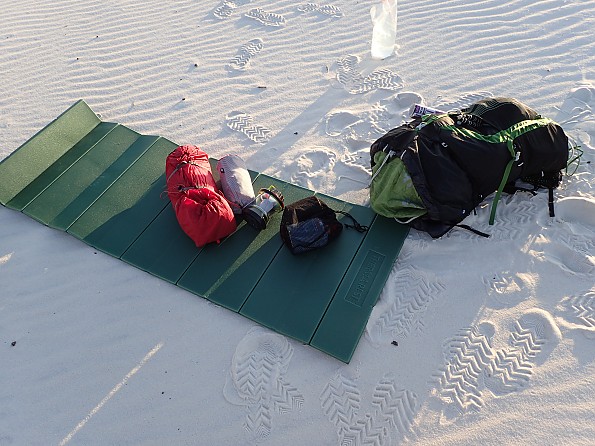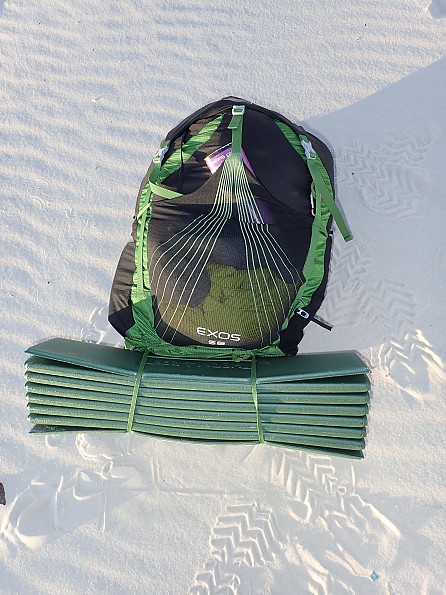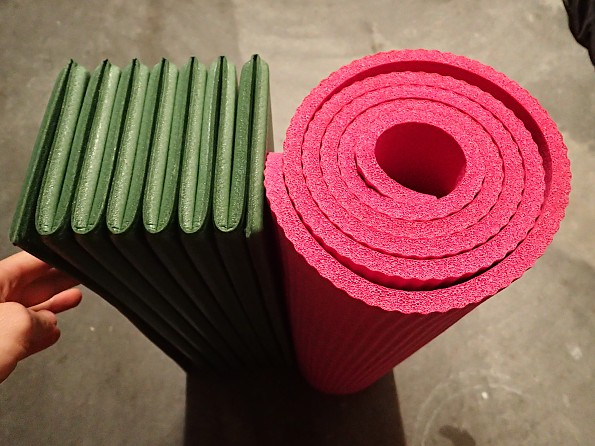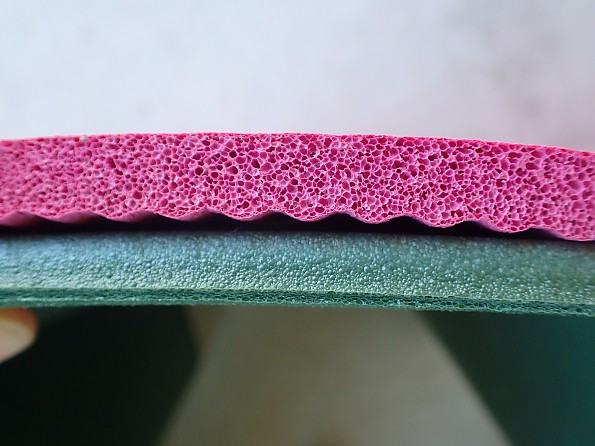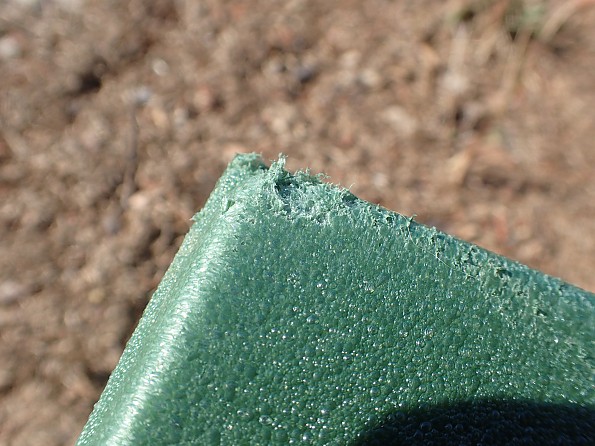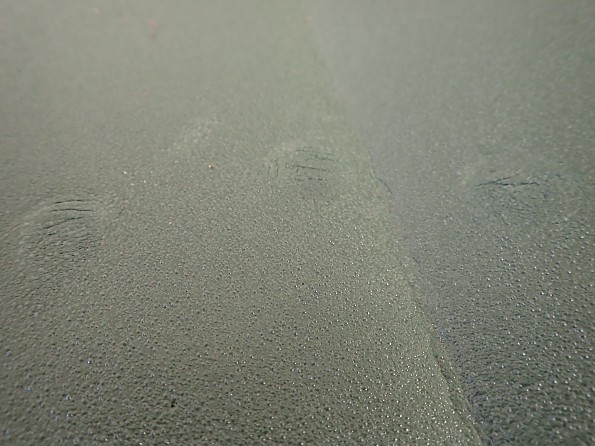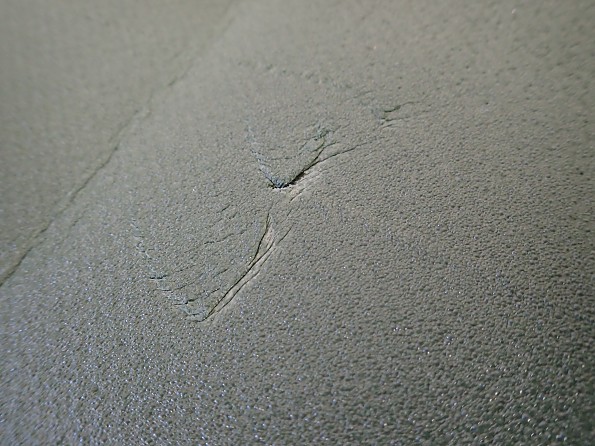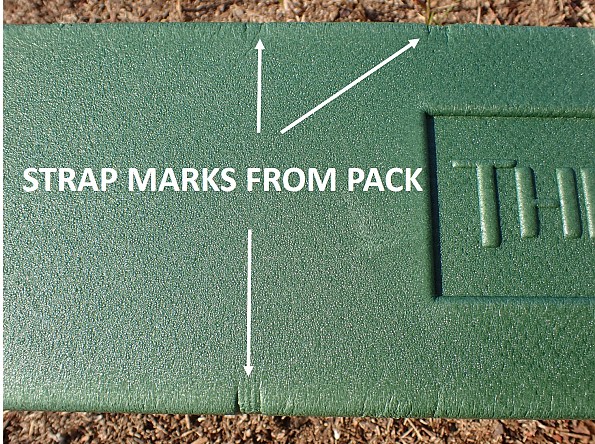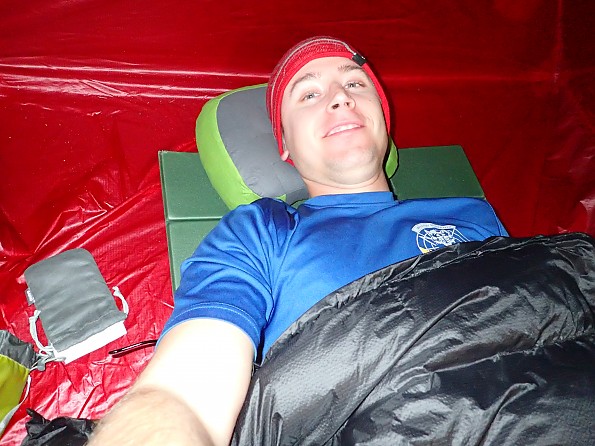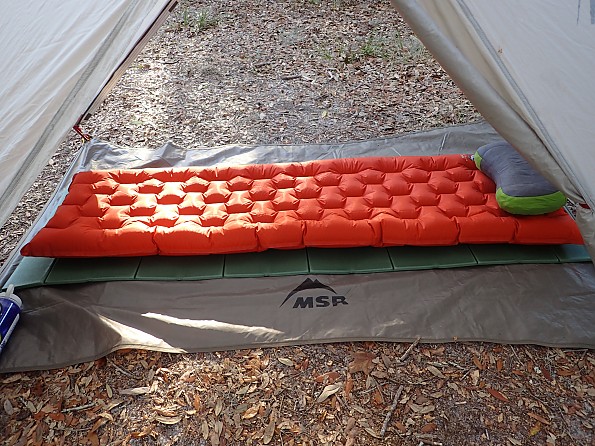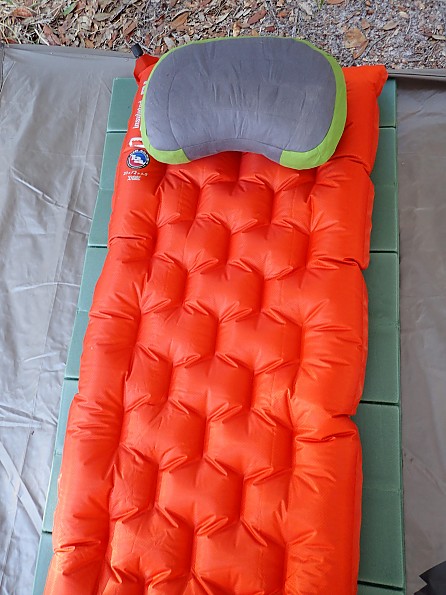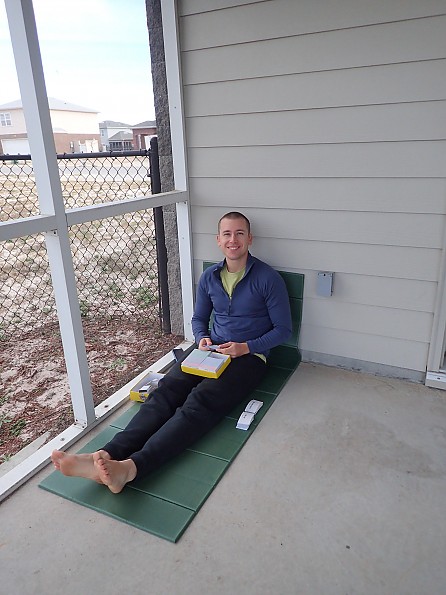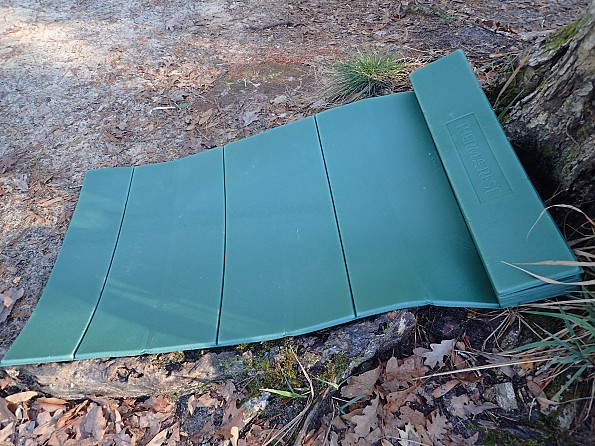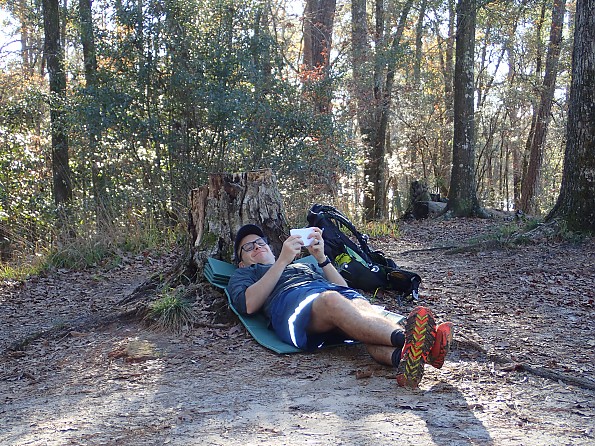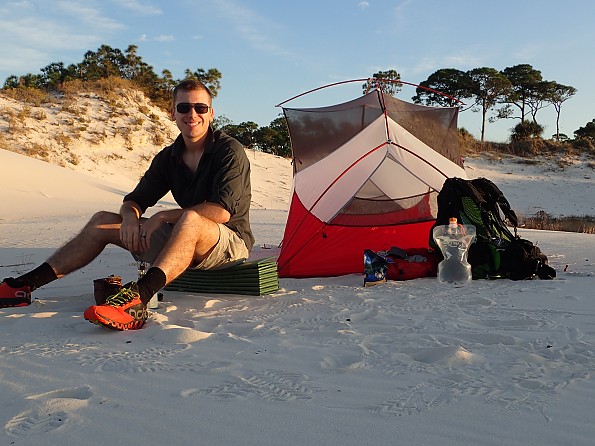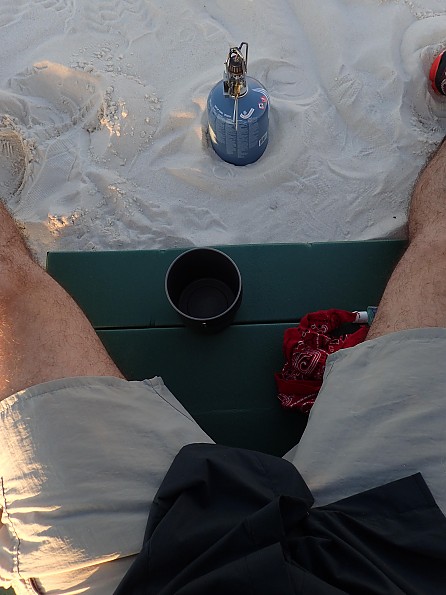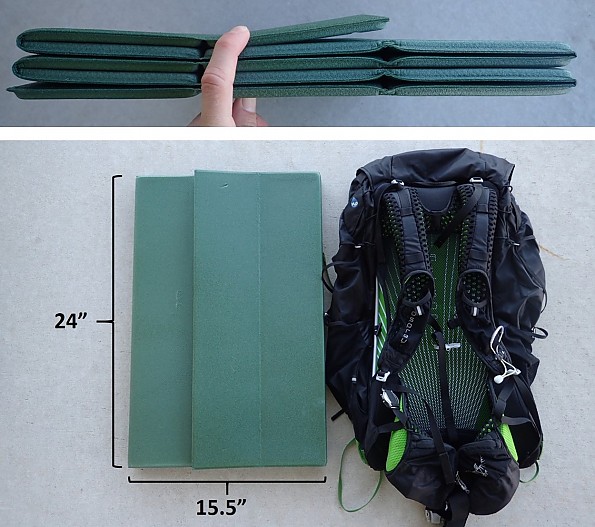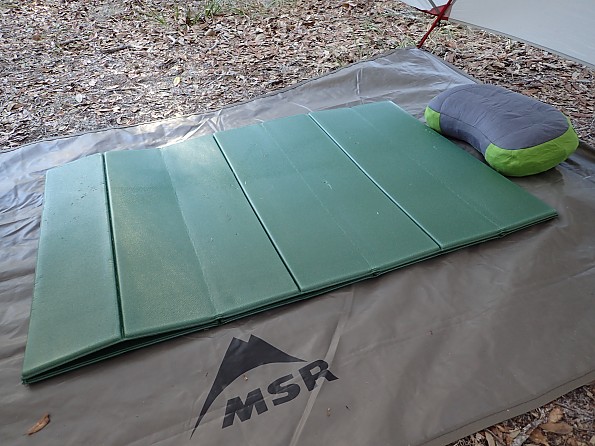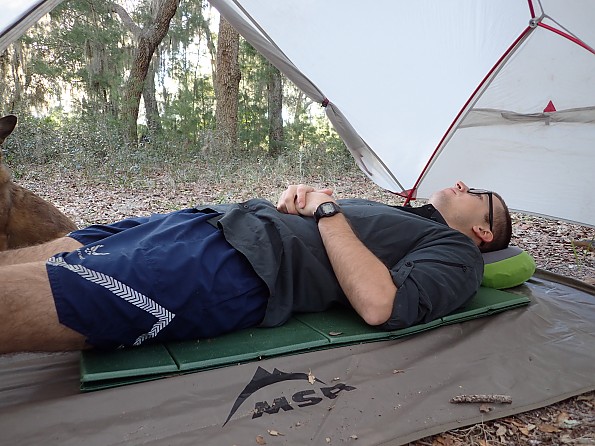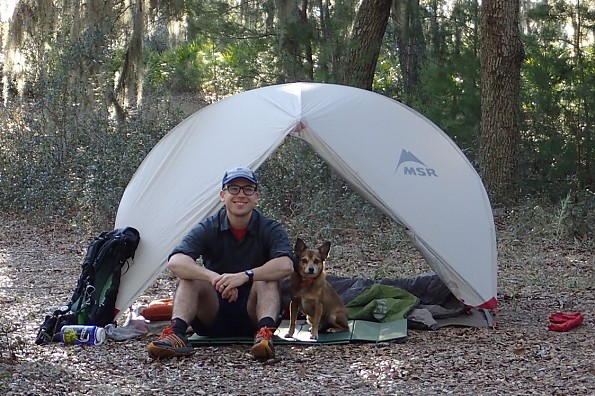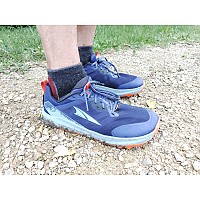Therm-a-Rest Z-Shield
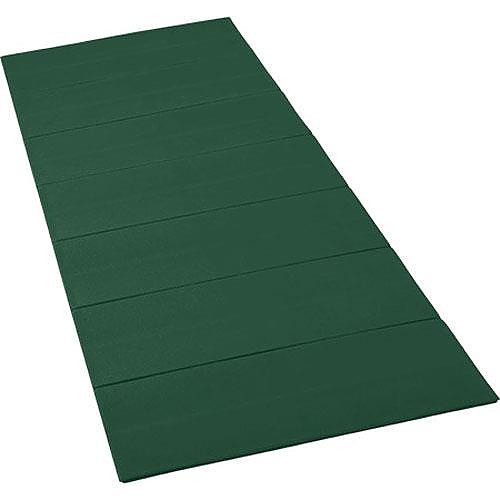
The Therm-a-Rest Z-Shield is a dense, accordion style, closed cell foam mat. I’d recommend not relying on this as your primary sleeping pad, but it is good for beginners or younger campers. The Z-Shield also could be used as a back support in a frameless pack and comes in handy when a dry or clean place to sit is lacking around the campsite.
Pros
- Multi-purpose use in different configurations
- No issues with deflating
- Inexpensive
- Slightly tacky surface to prevent sliding during the night
Cons
- Not as resilient as claimed
- Concerns over foam “bouncing back” after periods of compression
- Other CCF pads in same price range offer higher warmth and durability
Testing Conditions
I’ve tested it primarily in Florida, but also in North Carolina between mid-October through January. I used the Z-Shield as my sole sleeping mat for seven nights and once along with an inflatable Big Agnes Q-Core SL. Temperatures for sleeping ranged from 37 to the mid-50s Fahrenheit.
Specs
- Sizing is regular (only size option currently available)
- MSRP $24.95
- 24" x 72" when unfolded
- 24" x 5" x 5.75" when collapsed
- 12 oz
- 1cm thickness
- R-Value 1.5
I think most of us had that standard blue mat when we first started camping. My standard CCF is pink, has ridges, and is 5/8" (about 1.5 cm) thick. While other closed cell foam (CCF) mats like the Therm-a-Rest RidgeRest ($14.95) or Z-Lite ($39.95) aren’t those which TaR compares in their claim, they share similar traits to the Z-Shield; I’ll make note of these. I have experience with the Z-Lite as I used it during college.
Durability
Therm-a-Rest describes the Z-Shield as:
A step up from the standard “blue mat” the Z-Shield offers the superior compressibility of our Z-fold construction and nicer, more resilient foam. It makes a great entry level or emergency mattress, and can be used to protect mattresses during an open bivy and to boost the warmth of any sleep system
It seems that Therm-a-Rest's claims of the foam being more resilient is that it is more dense than its other mats. TaR also notes that the Z-Shield is "virtually indestructible closed-cell foam" which "provides lasting, economical comfort." Over my nearly four months of use, I do take issue with this claim. While it is resilient, I have had some wear on the mat.
There are no issues of tearing along the folds. The only signs of wear that I have noticed are punctures, small areas of wear at the edges, and areas which stretched. By stretching I mean that it looks like the foam has been twisted where I placed weight and pivoted on it, almost like abrasions. There is even an area where I must have done the same and there are three fingertip marks on it.
Three corners are beginning to look like the picture in the upper left.
Compared to my pink CCF mat, the Z-Shield seemed to get punctures and abrasions easier. Also, the dense foam has maintained compression such as the areas where I have had it tied it down to my pack. Over time, I have some concerns whether this pad will be compressed in certain areas of regular use such as the hips and shoulders. This would turn that 1 cm thickness into even less and denser.
While it has a flat, smooth looking surface (unlike the RidgeRest) I didn’t find myself slipping off during the night. Nor did I find any issue with the surface slipping when I was on an inflatable and no issues sliding on my tent floor.
Warmth
To get a better sense of the temperature rating, I used my DIY top quilt on the six nights I slept directly on the mat; the mat was my only insulation for back side. The recorded lows were in the 50s three times, three days in the 40s with the lowest at 44, and overall lowest at 37 degrees Fahrenheit. Based on my night when it was 44°, around 45° would be my recommendation as a comfortable low. The night at 37°, I ended up going with my inflatable that I brought, just in case.
This night above the Apalachicola River was 50 degrees even and I was really comfortable. It was definitely noticeable when my arms fell off the mat and were directly against my tent floor.
During college I was able to take the Z-Lite down to freezing, making it a solid three-season CCF mat choice. The Z-Shield wouldn’t be able to make it this low on its own though, though it could be combined with an inflatable to increase the warmth and protect from punctures.
Comfort
I found the Z-Shield to only be comfortable while sleeping on my back. As expected, the 1cm thickness and dense foam wasn’t well suited for side sleeping. Perhaps when I was a younger kid and had more a resilient body, I wouldn’t have minded. My pink foam mat is more cushioned than the Z-Shield.
Therm-a-Rest’s claim of the mat being an “entry level” option has even more meaning here in that sleeping position is limited and that the Z-Shield may be more friendly to youngsters just starting to camp.
I’m primarily a side sleeper and prefer using an inflatable pad. I do, though, recognize the importance of using a CCF mat which can’t ever get punctured and deflate and can be used on rougher terrain. With the Z-Shield, I slept solely on my back. Depending on where you place your head while sleeping, it’s only six feet long, so keep that in mind. My 5'9" frame fits perfectly while keeping my head/pillow on the mat.
The 24" width is nice as it is wider than typical regular size inflatable mats.
Other Functions
Unlike the standard blue mat, the good thing about the 14 sections of the Z-Shield is that they can be folded in different configurations. This is where the Z-Shield becomes more useful than a simple entry-level mat. Other than using for sleeping, I also used it often as a mat to sit against the ground and a vertical surface such as a wall or a tree stump.
My go-to seat when I needed to study my notecards and wanted to enjoy a view or the weather. The Z-Shield molded well to uneven surfaces.
The folds also make it nice to use as a seat and place mat after arriving at camp. I came to really like this at the sandier campsites here in Florida. A blue mat wouldn’t be able to hold its structure like the Z-Shield. The elevation that can be achieved folding the Z-Shield about two-thirds makes it a nice camp seat with enough left over to use (such as food prep like the pic below).
I’d imagine that the Therm-a-Rest Z-Shield could also be used to brace a frameless pack. The pic below has the mat folded to five times (fifth time is only two fold sections wide). I don't have a frameless pack, so I can't confirm how this configuration may work.
The mat is a bit thinner than other mats at 1cm, but it can be folded in half to double to 2cm. For my 5'9" frame, that is enough to reach just below my bottom. I’d recommend this for temps about the mid-50s. If you want additional padding, but can deal/have a way to negate heat loss on your lower body.
Showing the layout of the mat folded in half.
Direct Comparison to Standard Blue Mat
When reviewing the specs of REI’s blue foam mat, the Z-Shield is
- the same thickness (1cm), has a higher R-Value (1.5 vs 1.4)
- three inches shorter at 72" vs. REI’s 75"
- weighs less (12oz vs 13.5oz)
- more expensive ($24.95 vs $20) and
- is not as resilient of a foam in my opinion
On the other hand, the accordion style allows for more versatility and compresses to a smaller packed size.
Consideration for Other CCF Mats
Two other popular mats are the Therm-a-Rest RidgeRest Classic and Z-Lite. Both share a 2.6 R-Value and weigh 14 ounces (size Regular). The Z-Lite shares the accordion style design and is 2cm thick. When I used this in college, I didn't have nearly as much of a problem sleep on my side. Its egg crate type of design also probably added to my comfort.
The Ridgerest, though, is 1.5cm thick and a flat mat which must be rolled up. I know a guy who has been using one since college and it has really proven to be quite durable. At $14.95 MSRP it has to be a contender when considering which to purchase.
It doesn't seem that TaR is marketing the Z-Shield to replace either of these two designs, but instead offering some characteristics of both and competing with the classic entry level blue mat.
Recommended Uses
I would recommend using the Z-Shield as the sole sleeping mat for temperatures above 45 degrees Fahrenheit. This mat also works well to protect an inflatable pad while sleeping on rougher terrain as well as to boost the R-value on your current sleep system.
For those who like to pack lighter and have as much multi-use gear as possible this would be a good buy. The Z-Shield can be provide support for a frameless pack, camp seat, and offer multiple sleeping configurations as a sleeping mat. I also think this would be a great choice for younger campers.
Conclusion
The claim made by Therm-a-Rest about the Z-Shield is correct in that this is an entry level mat that can be used in a pinch. I wouldn’t consider it as resilient as other mats I’ve used even the typical blue mat, though it has fared well considering the abuse it has received. I would still consider the Z-Shield more versatile than a blue mat in that the accordion style folds offer a wide range of set up options.
When only considering between a regular blue foam mat and the Z-Shield, I would chose the Z-Shield. The Z-Shield by itself isn’t that bad, but for me there are better options available if I were to consider other CCF mats such as TaR's Ridgerest or Z-Lite.
Thank you, Trailspace and Therm-a-Rest for allowing me to test this product.
Source: received for testing via the Trailspace Review Corps
(Sample provided by Therm-a-Rest for testing and review)
Your Review
Where to Buy
You May Like
Specs
| Price |
MSRP: $24.95 Historic Range: $13.69-$24.95 |
| Weight |
450 g / 16 oz |
| Dimensions |
61 x 183 cm / 24 x 72 in |
| Thickness |
1 cm / .38 in |
| R-Value |
1.5 |


